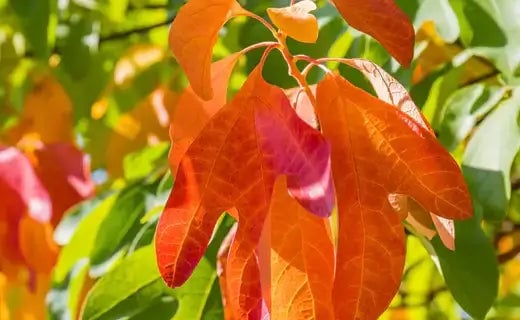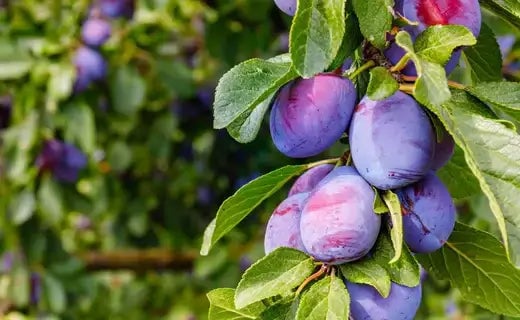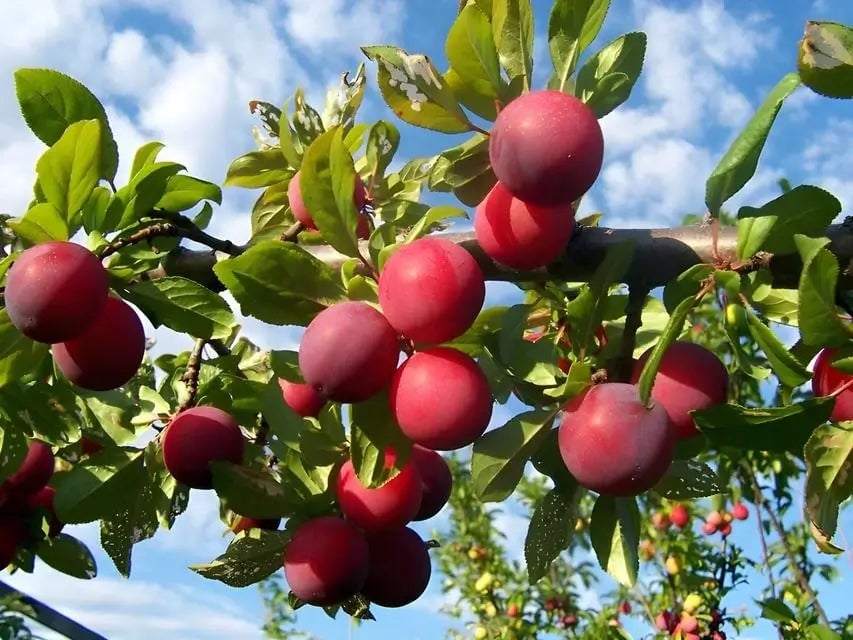An Exploration of Santa Rosa, Wild, and Cistena Varieties
Plum trees (Prunus domestica) have been cherished in human culture for centuries, celebrated for their delectable fruit and ornamental beauty. Among the diverse array of plum tree varieties, three notable types stand out: Santa Rosa Plum trees, Wild Plum trees, and Cistena Plum trees. Each variety boasts unique characteristics, historical significance, and contributions to horticulture and culinary arts.
Santa Rosa Plum Trees: A Flavorful Delight
The Santa Rosa Plum (Prunus salicina 'Santa Rosa') has earned a special place in the hearts of fruit enthusiasts due to its exceptional taste and versatility. Named after Santa Rosa, California, this plum tree variety was created in the late 19th century by famed horticulturist Luther Burbank. The Santa Rosa Plum is known for its large, heart-shaped fruits with deep purple skin and amber flesh. Its distinct flavor profile perfectly balances sweetness and tartness, making it a popular choice for fresh consumption, baking, canning, and jam-making. The Santa Rosa Plum tree is prized not only for its delectable fruit but also for its striking appearance. The tree produces fragrant white blossoms in spring, adding elegance to gardens and landscapes. Its growth habit is relatively compact, making it suitable for smaller spaces. The Santa Rosa Plum is also known for its relatively early fruiting, often yielding its bounty in mid-summer, which is eagerly anticipated by gardeners and food enthusiasts alike.
Wild Plum Trees: A Connection to Nature's Bounty
Wild Plum trees (Prunus americana), also referred to as American Plums or Native Plums, hold a special place in North American ecosystems and culture. These hardy and adaptable trees are native to the continent and have been an essential food source for indigenous peoples for centuries. Wild Plum trees are known for their small, round fruits ranging from yellow to red to dark purple. The fruits are often smaller than cultivated plums but pack a flavorful punch, combining sweetness and tanginess. One of the remarkable features of Wild Plum trees is their ecological role. They provide essential sustenance for wildlife, including birds, mammals, and insects. The blossoms of Wild Plum trees attract pollinators, contributing to the biodiversity of local ecosystems. Additionally, Wild Plum trees are often used in conservation efforts to restore native plant communities and provide habitat for wildlife.
Cistena Plum Trees: A Fusion of Beauty and Flavor
The Cistena Plum (Prunus × cistena) is an ornamental variety that marries aesthetic appeal with fruit-bearing capabilities. A cross between Prunus cerasifera and Prunus pumila, this plum tree variety is often classified as a purple-leaved sand cherry. The Cistena Plum is valued for its deep purple foliage, which adds a dramatic touch to gardens and landscapes throughout the growing season. While the Cistena Plum is primarily sought after for its ornamental attributes, it also produces small, dark red to purple fruits suitable for consumption. The fruit's flavor is sweet and slightly tart, though it is generally not as large or juicy as the fruits of other plum tree varieties. Despite its smaller fruit size, the Cistena Plum tree's dual purpose as an ornamental and fruit-bearing tree makes it a popular choice for home gardeners looking to enhance their outdoor spaces while enjoying a modest harvest.
Cultivation and Care of Plum Trees
Cultivating plum trees, regardless of the variety, requires attention to their specific needs and characteristics. These trees thrive in well-drained soil with ample sunlight, ideally receiving at least six hours of direct sunlight daily. Adequate spacing between trees is crucial to ensure proper air circulation and minimize disease risk. Regular pruning helps maintain the tree's health, shape, and fruit production. Each variety may have distinct care requirements, such as specific pruning techniques, disease susceptibility, and pollination considerations. For instance, some plum trees, including Santa Rosa Plums, benefit from cross-pollination to ensure optimal fruit set. Choosing compatible pollination partners is essential for maximizing fruit production.
Plum trees have captured human fascination for centuries, offering a range of flavors, colors, and uses. The Santa Rosa Plum, with its flavorful fruit and lovely blossoms, is a testament to the harmonious blend of taste and aesthetics. Wild Plum trees embody the connection between nature's bounty and the sustenance it provides to wildlife and indigenous communities. The Cistena Plum, with its striking foliage and modest fruit yield, exemplifies the fusion of beauty and practicality in landscaping. As gardeners and cultivators continue to appreciate and explore the world of plum trees, these remarkable varieties will continue contributing to our culinary delights, ecological balance, and visual pleasures.
#fruittrees #plumtrees #edible #tnnursery
Read more

This deciduous tree, native to eastern North America, is renowned for its unique leaf shapes, remarkable size variations, insect-repelling properties, preference for cool and temperate climates, an...

Pollination is a vital process in the reproduction of flowering plants, ensuring the transfer of pollen from the male to the female. Maximizing Pollination can significantly enhance plant productiv...





